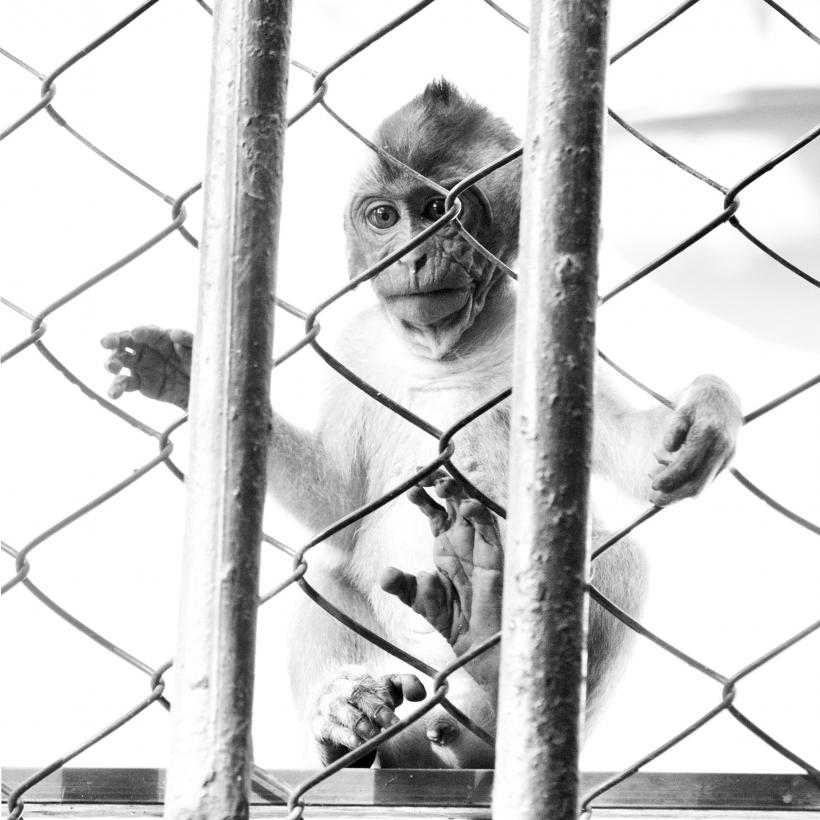
Retribution is all well and good—and damn satisfying, as Carrie Underwood so blithely bellowed about—but many experts are insisting that solitary confinement (hugely popular in America's prison system) may be too extreme a punishment for any crime. In fact, they liken it to torture.
And with more than 80,000 people currently ensconced in the "hole," that's a staggering amount of people we're subjecting to sanctioned sadism.
Sen. John McCain was a prisoner of war in Vietnam for five years, two of which were spent in solitary confinement. He has said that solitary "crushes your spirit and weakens your resistance more effectively than any other form of mistreatment." And this is coming from a man, as a New Yorker author wrote, who "was beaten regularly; denied adequate medical treatment for two broken arms, a broken leg, and chronic dysentery; and tortured to the point of having an arm broken again." — Laura Dimon, PolicyMic
Believe it or not, solitary confinement was instituted by a bunch of Philly Quakers in 1829, who staunchly believing that total isolation would breed penitence (hence the name penitentiary); Southeastern Pennsylvania Penitentiary was the first-ever prison to boast solitary confinement cells. In fact, that's all it had.
The U.S. has had a long-time love affair with throwin' people in the clinker; in fact, many believe that our country's prison system has renounced the concept of prisoner rehabilitation altogether and there's nothing more emblematic of our profound commitment to punishment over restoration than solitary confinement. Indeed, some psychologists believe we're rendering prisoners societal anomalies, incapable of ever participating in "civilization" again. Not only is this a huge economic burden — the cost of housing a prisoner in solitary is estimated at $75,000 per year — but it undermines our very humanity. Doesn't everyone deserve a second chance? And shouldn't our prison system at least allow that possibility to exist?
For the inmates who endure it, life in solitary confinement means living 23 to 24 hours a day in a cell. Federal inmates in disciplinary segregation, for example, typically spend two days a week entirely in isolation, and 23 hours a day in their cell the remaining five days, when they are allotted 1 hour for exercise. Exercise usually takes place alone in an exercise room or a fenced or walled “dog run.” Some prisoners are escorted, in shackles, to the shower, while others have showers within their cells. They may or may not be allowed to leave their cells for visits or to make telephone calls. — SolitaryWatch.com
Scarier still is the sheer volume of people we imprison and potentially expose to this kind of treatment. While the U.S. has a mere 5% of the world's population, we house 35% of the entire world's incarcerated population; since 1984, the prison population has increased by 700%.
While there's a bevy of prison form fodder out there, currently there's no new legislation on the table to combat what seems to be staggering evidence against solitary.
Studies on birds, rats and mice consistently show that isolated animals suffer from impoverished neural growth compared with socially engaged animals, especially in areas where short-term memory and threat perception are processed. Studies on Yugoslav prisoners of war in 1992 found that those who had suffered blunt blows to the head and those who had been socially isolated suffered the greatest damage to brain functioning. — David Brooks, NYT
If someone has committed a crime, does that mean we can subject them to any punishment we like? Do we have a responsibility—even to depraved criminals—to foster as much benevolence as we can in the hopes of turning their mental tides away from the dark side?
Image: ThinkStock






